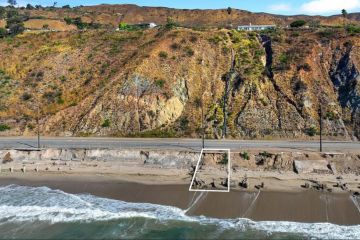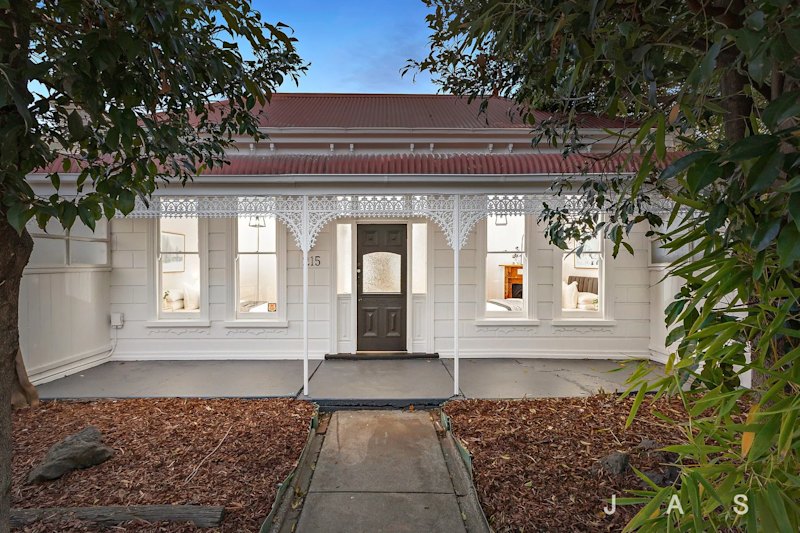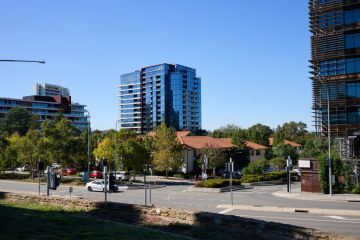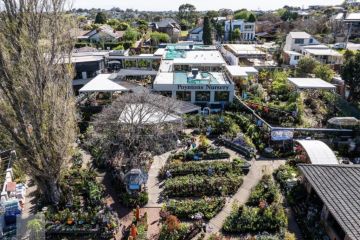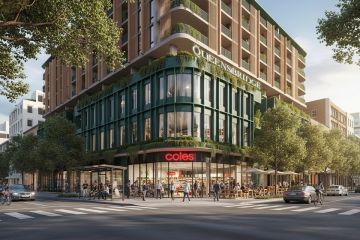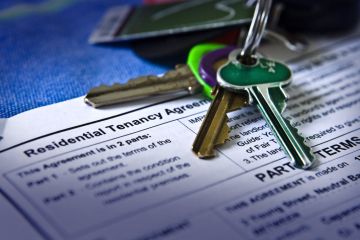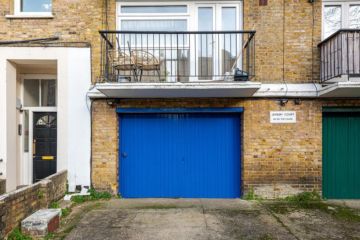A beginner's guide to Melbourne and its different regions
So you’ve decided to make the move to Melbourne. Whether that’s because you’re studying, got a new job or have simply decided trying to save $7 million for the necessary deposit on a shoebox apartment in Sydney is too much to deal with now, welcome.
But where do you belong? Which of Melbourne’s tribes will you ultimately claim membership of? Will you be north or south of the river, or (shock, horror) in the west?
The CBD
You’re the centre of attention and all the action here, and if you choose to call the Hoddle grid home, you can bet that your mates will want to use your (admittedly tiny) pad as a starting point — or final destination — for a night out.
Sure, you’ll living in a building where you probably won’t know your neighbours, but who does, anyway? And who needs neighbours when you can walk to work, gleefully avoiding peak-hour crushes and copping an elbow to your head when you’re scrambling onto a train into suburbia.
Plus there’s the added benefit of shopping, dining, drinking and exploring at whatever hour of the day without regard to arbitrary things like “trading hours”.
Main hubs: Bourke Street, Russell Street, Flinders Street, Spencer Street
Move here if you like: Not needing to cook at home, a choice of five train stations, small living quarters
Avoid if you like: Peace and quiet, a backyard, on-street parking.
- Related: Melbourne’s 321 suburbs ranked for liveability
- Related: What makes a suburb liveable?
- Related: Pocket suburbs that pack a punch
City fringe
The suburbs you call home when you don’t want to live two streets away from the office. You’ll find an ever-growing number of high-rises here, but also cute cottages and a few family-sized homes, which, if your budget will stretch, are worth the investment.
There’s also kudos from the cool crowd in living in “once-gritty” suburbs that have come good. (You’ll even get these for living in Richmond though it’s been close to three decades since anyone thought Richmond as a whole was gritty.)
It’s also hard to escape the football influence, with the MCG, Victoria Park and Arden Street all nearby.
Main hubs: Richmond, Collingwood, North Melbourne
Move here if you like: Trams, football, Swedish megastores
Avoid if you like: Being able to drive stress-free, access to the bay, affordable rent.
The inner north
Ah, the inner north. Long-term residents will fondly recall the days when it was dominated by Greek and Italian immigrants with small businesses, rather than apartment towers and young professionals with plenty of cash to splash at bars and restaurants.
But that doesn’t mean the character’s gone altogether. Take a walk beyond the main and traffic clogged thoroughfares and you’ll easily find why so many people are happy to set up home here.
Plenty of trams and two train lines make this area one the of city’s better for public transport.
Main hubs: Northcote, Fitzroy, Brunswick
Move here if you like: A bar on nearly every corner, burgers, being thought of as a cliche by everyone who lives elsewhere.
Avoid if you like: Being a hipster without prejudice, trams without crowds, getting to sleep at the weekend without the sounds of live music.
Bayside
Briiii-ghton, darling, isn’t the only bayside suburb if you love life by the beach. Sure, it’s a main hub, but there’s also Middle Park (if you can afford it) and its sibling, Albert Park (mind the Formula 1 noise each year), and what some might call the most classically Melbourne suburb, St Kilda.
The moneyed may well have laid claim to this as their patch (anyone for a stockbrokers in crisis polo and picnic?) but more down-to-earth St Kilda and Elwood have some of the nicest places to spend a weekend in the city. It’s a mix of backpackers, students and families.
Plenty of older style homes and apartment buildings are sharing street space with newer builds, particularly in new money Brighton.
Main hubs: St Kilda, Elwood, Brighton
Move here if you like: Beaches, black BMWs and doing errands in your activewear.
Avoid if you like: Huge shopping malls, hipster coffee on every corner, not being yelled at by soccer mums on the school run.
The inner east
Stately homes, ancient railway stations, and a reliable train service all the way through to Box Hill; the inner east is starting to shake off its long-held “boring” image. Sure, you’ll still struggle to find a bar in Camberwell, but Hawthorn is more than coming into its own with a few cool cafes and eateries.
The Eastern Freeway is still a handsome-looking stretch of motoring pleasure (RIP Doncaster rail proposal), and things do seem a bit more relaxed out this way.
The biggest fight you’re likely to get into here is with the local heritage group if you put in plans to renovate your house, or, shock horror, propose a subdivision. That and a contest about where to find the best dumplings: the city or Box Hill.
Main hubs: Hawthorn, Camberwell, Box Hill
Move here if you like: Sprawling suburbia, council-sanctioned “dry zones” and being able to get a train more than every 10 minutes.
Avoid if you like: Not having to mow the lawn, live music, terrace houses.
The inner west
The inner north you have when you can’t afford the north. These days, you can tell a true inner westie pretty quickly: they’re the ones who don’t moan about only having a couple of bars to choose from in each suburb.
Footscray market is still one of Melbourne’s best and cheapest shopping hubs, while Williamstown, referred to by some locals as the “Toorak of the west”, retains its long-held allure. It’s the only place in Melbourne where you can find a Toorak-style house for nearly half the price at a similar distance to the city.
Quieter suburbs in the middle — Seddon, Spotswood, Newport … oh sorry, I’ve just ruined it for the few people left who thought these places were undiscovered gems.
Main hubs: Yarraville, Footscray, Williamstown
Move here if you like: Boutique cinemas and shopping, truck fumes, venues the rest of the city won’t travel to
Avoid if you like: The north v south debate, not crossing an enormously tall bridge most days the week, trams that run direct to the city.
The outer north
Anything north of Bell Street is now firmly in the sights of home-hunting hipsters and developers targeting hipsters who can’t afford the inner west. Thomastown and Glenroy residents, you’ve been warned.
Expect to find plenty of older detached, brick veneer homes on large blocks here, and, further north, lots of house and land display villages. As the city sprawls, this is one spot where the government’s finding more room for the thousands moving to the city each year.
It’s also ripe for some creative minds; Broadmeadows in particular is coming in for plenty of attention and funding.
Main hubs: Reservoir, Broadmeadows, Craigieburn
Move here if you like: Diverse dining and language options, the opportunity for a swing set in the backyard, being able to maybe afford a house.
Avoid if you like: Not getting held up on the Ring Road every day, boutique shopping.
Next exit on the M80.
The outer south-east
If you can’t have bayside proper, there’s always the south-eastern bayside, but you’ll pay for it in your commute. Further inland, other suburbs boast plenty of expansive hills at the edge of the Dandenongs, but you might find yourself limited when it comes to options for dining out.
Main hubs: Cranbourne, Frankston, Narre Warren
Move here if you like: Hills, trees, being far from the city
Avoid if you like: An easy drive to work, nightlife.
The outer west
Long derided as the arse-end of Melbourne, no thanks to the Werribee sewage plant (a good spot for bird watchers, incidentally), the outlying western ‘burbs have of late become more attractive for savvy investors and first-home buyers. New train stations and services have helped but it remains to be seen if the confidence is matched by price increases.
Werribee Mansion and the open range zoo are some of the unsung heroes of Melbourne, and living here, you’re just a hop, step and a jump away. Again, a lot of older-style houses, new builds, new estates — and the occasional, ahem, owner’s vision homes — are what you’ll find here.
Main hubs: Werribee, Laverton, Point Cook
Move here if you like: Long bus trips, potential renovation projects, African animals not far from home
Avoid if you like: Being close to the action (Pacific Werribee aside).
Geelong
Calm down: it’s only a matter of time before Sleepy Hollow is part of the metropolitan boundary proper. Yes, it’s a city of its own with its own council, but many Melburnians are taking the reasonably short trip down the freeway to escape soaring house prices and the suburban crush.
Plus, with a few new industries emerging and a growing foodie and arts scene, Geelong is emerging as a viable alternative.
Main hubs: Ryrie Street, Newtown, the Princes Freeway
Move here if you like: Floating Christmas trees, cool new libraries, staying out of Melbourne
Avoid if you like: Melbourne, an AFL team besides the Cats.
We recommend
We thought you might like
States
Capital Cities
Capital Cities - Rentals
Popular Areas
Allhomes
More
